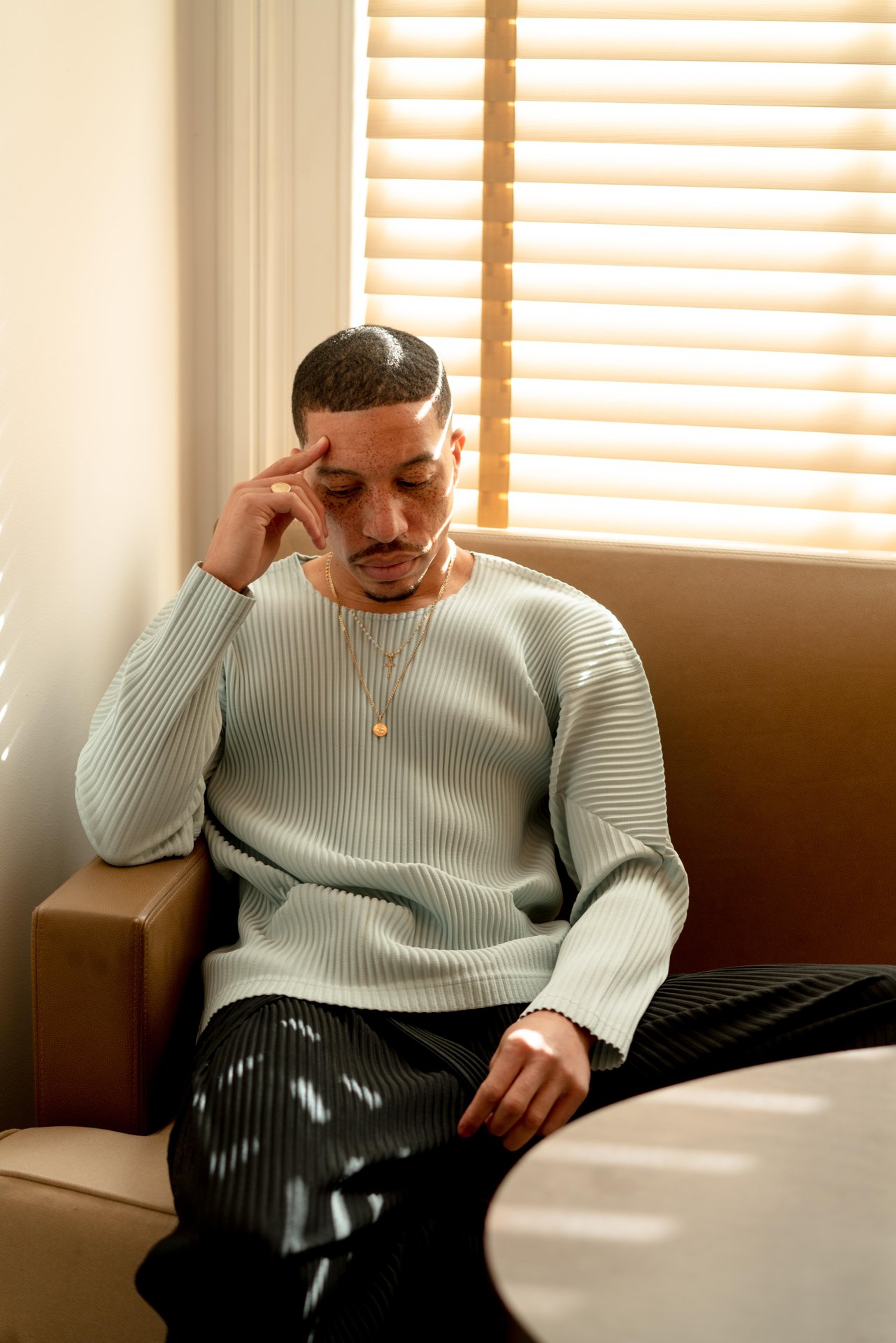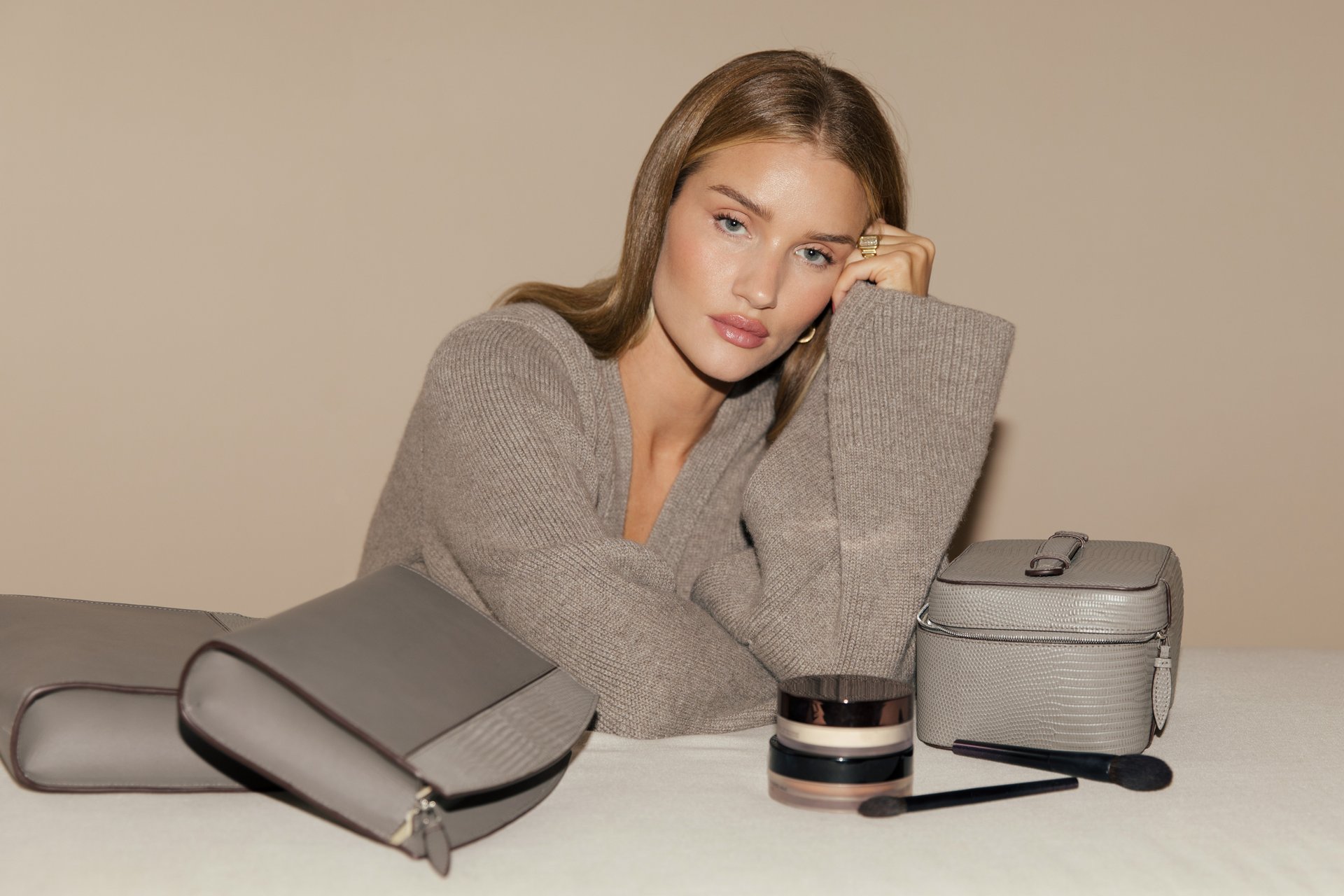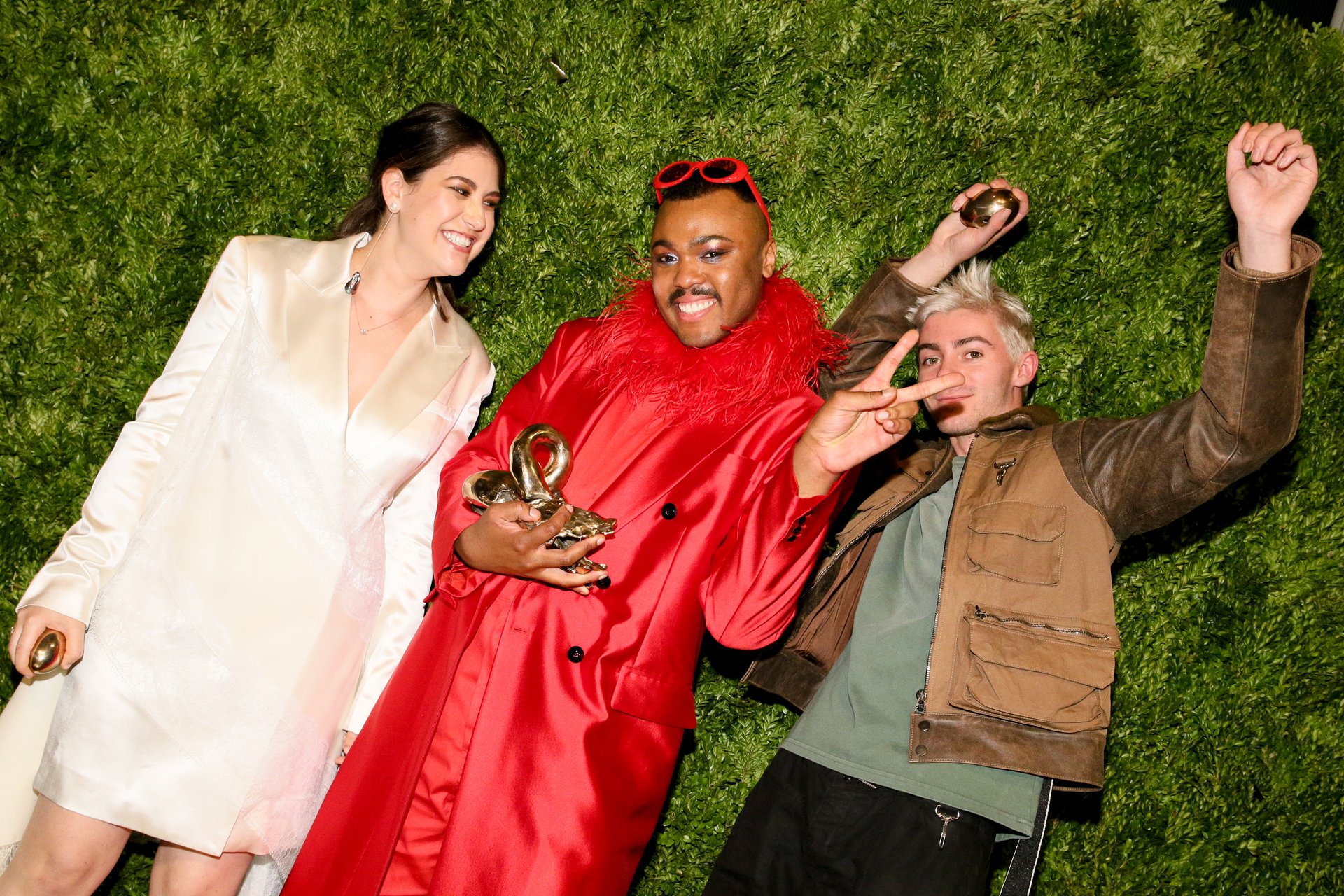Sean Brown on Wearing Sean John like It’s Prada, Life Evaluations & More
March 9, 2021
Rashad Brown


Relatively few individuals can say they were on-set with Justin Bieber as they were being interviewed for a story, but that is the beauty behind Sean Brown, the guy with many ideas who often gets to bring them to life. Curves by Sean Brown is his brand; “An outpost of expression and opinion” where you can find something unique and aesthetically functional for your home. His interest in the arts has significantly grown in these pandemic times. A scroll through his Instagram takes you down a rabbit hole of perfect curation though life was anything but ideal for the Jamaican Canadian who grew up in Toronto. He spent time in and out of foster care and group homes, dropped out of high school, and The International Academy of Design and Technology (IADT), which closed after merging with Sanford-Brown. The last drop-out situation was on behalf of a professor who spent one afternoon demotivating his class after telling them “that there wouldn’t be many jobs for all of us after we finished at the school,” Brown recalled.
While few things in life kept their value as he bounced around from school to school, art has remained constant in his life. Throughout his childhood, he’d always tell his parents that he would work for Disney someday. Then it was Russell Simmons’ Phat Farm and Jay-Z and Damon Dash’s Rocawear; the latter came with a lesson from his father who somehow found the number to Def Jam and called the offices one day after calling his son’s bluff.
“I remember him asking me, ’How are you going to make this happen?’ Brown said. “I had no idea. He called the Def Jam number he had found, and then the words ‘Hello, Good Afternoon, Def Jam‘ came from the other side of the phone. It was his way of teaching me to be about what I say.”
Time has steadily passed since the days of Source Magazine and the heyday of Black brands like Phat Farm, Karl Kani, and FUBU, but publications and brands like the aforementioned are what “make me ride so hard for the 2000s.” Today, Sean works as a creative director for Daniel Caesar and Diddy, whom he still refers to as Puff: “I wear Sean John like it’s Prada.” He’s created his own photo galleries, and published a 500-page photo book with images photos from all his travels since 2015 titled “In No Particular Order.” If the pandemic has a silver lining, it permitted Brown and others an opportunity to center more around themselves and tap into their internal identities and ventures they may have pushed aside before.
Who are you, Sean Brown?
Like many people, a guy who was dealt some challenging cards in life and had to get over them to find himself in this crazy world. Sean Brown wants nothing more than for everyone to see the beauty that the world has to offer even amongst all of the ugly things about it. I want to promote quality of life and to utilize my arts and my gifts. Being completely transparent when I started out, a lot of what I was doing right was self-serving, and I involved myself in capitalism. I’m still there, you know, as I’m selling rugs and involving myself in commerce. I’m changing, though.
If you can remember. When was it that you decided you wanted to become an artist? Is that what you consider yourself?
I’m more of an idea person, really. I’m hired to execute ideas, whether for other individuals at varying stages of their careers or brands. I’m Daniel Caesar’s creative director. I’m Diddy’s creative director, but it’s quite different with him because so many different avenues and portfolios come with his brand.
What did life look like for you, and what were you doing for work before you found success in working with different artists and creating art?
I was doing what I feel like you would understand…the thing they tell you not to do, which is figuring it all out. Doing everything that young aspiring creatives and artists ask me about right now, the fearful; working jobs I hated, “cough, retail,” spending money I didn’t have, trying to get a project off the ground with a friend. I was doing and trying everything, and as broke as I was, I can always walk away saying, “at least I tried.”
Who and what inspires you daily?
Tumblr is still a constant stream of inspiration. But also all of my old print media. And as of late, archive fashion shows. Like Prada’s & Sean John’s first shows. I’ve also become obsessed with sample mixes lately. I find the concept of sampling fascinating and can relate to a degree. “What kind of couches do I like, how do I want my windows to look” – that’s what’s on my mind. On the flip side, Curves and the Home Décor situation were influenced by the societal changes that were and are still happening. Life became about my interest, taste, and the culture I derive from. You mentioned the Foxy Brown “ill na na” rug at the beginning of this call. That’s such an unspoken aesthetic and culture that only you and I would understand. We both know what Foxy Brown means to you and me, and that’s the language I’m now speaking to with visual communication. Not only does it have to look and appear on the same level as an Ikea or CB2, but it has to be about the blackness at the end. I’m no longer running away or trying to suppress it. Black culture has been influencing me since I was a kid, and now it’s time to put it into the art as I explore that side.
I was doing what they tell you not to do, which is figuring it all out. Working jobs, I hated ‘cough, retail,’ spending money I didn't have, doing everything that young aspiring creatives and artists ask me about right now. Broke as I was, I can always walk away saying, 'at least I tried.'
You’re becoming quite known for your CD rug? What inspired this creation, and what influenced you to focus on the rap community?
The rap community is a place that I come from, and it’s what allowed me to focus on it. It’s a place I actually know about. It would’ve looked so different if Urban Outfitters had started selling these instead of me “I was outside for those moments,” as we like to say. I was outside when Jay and Foxy were in videos together. I’m a cd collector as well, and this all happened while we were working on a ‘No Photos Rug,” and I just said out loud it would be really hard if we could get a die-cutting machine and try it as a cd. The rug ended up on Twitter by small chance, if I’m honest. I remember telling my team I’m just going to throw it up there, thinking we’d get maybe five or six inquiries about it. Sike! It exploded and turned into this whole situation that we were not prepared for and had to play catch up. Then came the puzzles, and from there, it all started becoming about the home and Home Décor because that’s where everyone is right now.
As a Black artist, how have things been for you? I’m not too familiar with the art world on a deep level, so how do you think your work is received?
I don’t have any direct experiences that I know of consciously where a white or non-Black person has tried to block me from doing something. I will say, thankfully, we’ve gotten to this point because many big events and societal changes shifted things last year. The construct that my father was trying to protect me from is something I can now tackle head-on. I had an issue with the fact that my pants couldn’t be too big or that my hair couldn’t be braided if I wanted to get a certain job. Now, I’m on Zooms in a du-rag if I feel like it; I’m not suppressing who I am to fit into the world’s idea of blackness. There’s a lot of Black people moving and shaking in the art and design space. I sometimes have to remind people in meetings that the idea of Blackness isn’t always us sitting on stairs or someone’s stoop braiding hair with some Beats By Dre headphones. Black people do everything, and I want the playing field to be leveled out. It shouldn’t be an anomaly that I’m into design because I’m Black.
Who are some of your favorite artist or interior designers?
I have a list for you. Teebs (painter/composer in LA), Knxwledge, Reginald Sylvester II, MALAYA (artist in LA and her voice is like a sunset), Kohshin Finley, Jordan Oram, my guy & Kelly Fyfe Marshall, who has a film at Sundance this year.
What are your aspirations for Sean Brown, and what do you see when you think about the next five years?
I have to evolve into lasting artistic impact and art that is beyond being self-serving. As I’m moving into another piece of my life, this is the first time I’m saying this, but back home in Toronto, I’m exploring a new type of interior design/architecture mainly for creatives that focuses on space making; that’s really what the project is. Quality of life must be improved. Apartments aren’t being done with taste, and companies are so wasteful. Urban Design! I’ve had the blessing of seeing some of the most beautiful places and homes in the world and want to really impact people’s quality of life. It’s a big deal to me, and I want nothing more than to help people, especially those who look like me.
Has your work been picked up by any museums, and if not, which ones do you hope to be in one day?
I’m not quite certain I’m focusing on that any longer. For me, the real win is seeing younger people and younger Black creatives caring about their spaces at home now. I’m not necessarily trying to be a part of social constructs and institutions anymore. I look at a lot of things holistically. Many arts you see in museums are stolen from us, and then they charge us to come to view them. Now I say that, but I can’t sit here and say I wouldn’t be appreciative or honored to see my work in a museum. I wouldn’t turn down a chance to be a part of that, but I would want to be a part of the narrative.
Black History Month just ended. I would love to know what the month represents for you.
I try to make it a point to start educating myself and doing research during February and out of the month. Being from Canada, we don’t have the same history as our brothers and sisters in this country, but Black History is made every day, celebrated, and is a part of the curriculum. Celebrating Black past and applying it to the future. Garret A. Morgan was a problem solver. He was an inventor who created the gas mask, and I had to find that out on my own when I decided to do a school project on him, and I always wondered why no one ever thought to teach that to me.
Is there any ancestor of ours you wish you could’ve met and why?
Garret A. Morgan was a creative who glanced around and saw that things that didn’t exist and figured he could change that and did. He had an enduring effect. He hasn’t been alive for a long time, and we still use the gas mask and traffic light to this day.
Are there any Black Designers/Creatives known or unknown that you would like to bring to the CFDA’s attention?
Another list of people. Carla Wells (the architect who designed Louis Vuitton’s residency in the Miami Design District), Sade Mims (designer at Edas), Wilson Smith III (who designed the Air Jordan XVI & XVII), Wales Bonner & Ini Archibong.
Web: Curvesbyseanbrown.com
IG: @byseanbrown
PHOTO BY JOSHUA RENFROE

